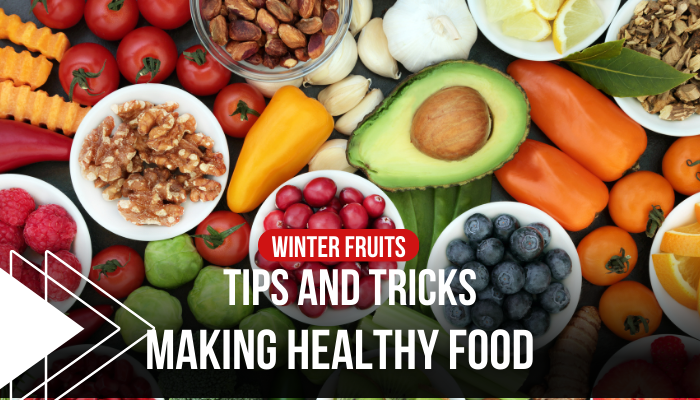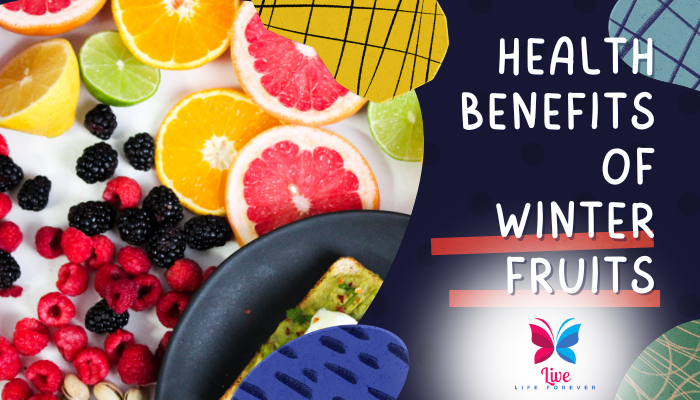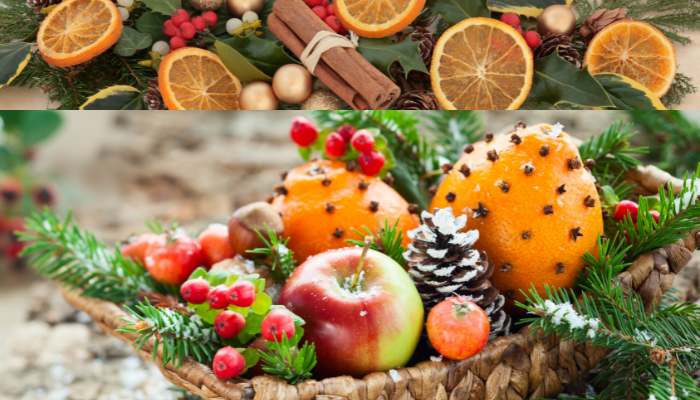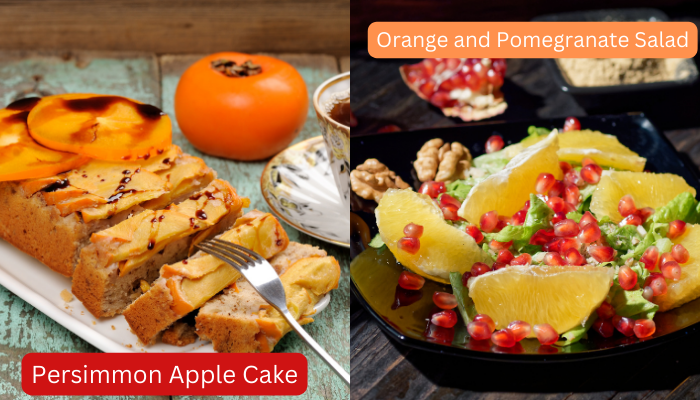
A Guide to the Health Benefits of Winter Fruits

What are Winter Fruits?
Winter fruits are those that come into peak season during the colder winter months. Many of these fruits store well, making them available and at their best quality during this time. Popular fruits that are in season in winter include oranges, grapefruit, pomegranates, apples and pears.
Winter fruits offer a variety of health benefits. Their bright colors indicate high levels of antioxidants. They also provide ample fiber, vitamins, minerals and unique protective plant compounds. Enjoying fruits that are in season and locally grown means you get the most nutritional benefits.
Here is an overview of some of the top winter fruits, their nutrition profiles, health benefits and how to enjoy them.
Top Winter Fruits and Their Benefits
Oranges
Oranges are one of the most popular and nutritious winter citrus fruits. Available varieties include navel oranges, cara cara oranges, blood oranges and clementines.
Nutrition Facts
One medium orange contains:
- Calories: 60
- Carbs: 15 grams
- Fiber: 3 grams
- Vitamin C: 70% of RDI
- Thiamine: 11% of RDI
- Folate: 11% of RDI
- Potassium: 7% of RDI
Oranges also contain antioxidants like anthocyanins, flavanones, hydroxycinnamic acids and ascorbic acid.
Health Benefits
- Boost immune system function: Oranges are packed with vitamin C and antioxidants that support immune defense against infections like colds and flu.
- Improve heart health: The combination of fiber, potassium, vitamin C and choline in oranges supports heart health by lowering blood pressure and cholesterol levels.
- Prevent kidney stones: Citric acid in oranges helps prevent calcium kidney stones.
- Increase iron absorption: Oranges rich in vitamin C significantly improve absorption of non-heme iron from plant foods.
- Support digestive health: Soluble fiber like pectin in oranges relieves constipation and promotes regularity for a healthy digestive tract.
Grapefruit
This large citrus fruit has a sweet, sour and tangy flavor along with many health benefits. Pink and red grapefruits also contain beneficial antioxidant compounds like lycopene.
Nutrition Facts
One medium grapefruit contains:
- Calories: 60
- Carbs: 15 grams
- Fiber: 2 grams
- Vitamin C: 64% of RDI
- Vitamin A: 28% of RDI
- Potassium: 5% of RDI
Health Benefits
- Aids weight loss: Grapefruit is low in calories and high in fiber. Eating it before meals can help lower calorie intake and enhance satiety.
- Protects against kidney stones: The citric acid in grapefruit reduces calcium build-up and risk of kidney stones.
- Increases heart health: Grapefruit helps lower LDL cholesterol, blood pressure and oxidative damage. This reduces risk of heart disease.
- Prevents cancer: Antioxidant compounds in grapefruit show anti-carcinogenic effects, inhibiting cancer cell growth and proliferation.
- Improves insulin resistance: Grapefruit may help lower blood sugar responses and insulin resistance, especially helpful for those with diabetes.
Pomegranates
Pomegranates have a tough outer layer and ruby red seeds inside that are bursting with juice. They add a unique pop of flavor and nutrition to any meal.
Nutrition Facts
One medium pomegranate contains:
- Calories: 150
- Carbs: 30 grams
- Fiber: 7 grams
- Vitamin C: 40% of RDI
- Vitamin K: 36% of RDI
- Folate: 16% of RDI
The edible seeds and juice provide antioxidants like anthocyanins, tannins, flavonoids and polyphenols.
Health Benefits
- Boosts immunity: Antioxidants like vitamin C, vitamin E and polyphenols promote immune function and help fight viral infections.
- Enhances heart health: Pomegranates improve blood flow, reduce plaque in arteries and lower lipid oxidation and risk of heart disease.
- Slows prostate cancer: Compounds in pomegranates may help impede cancer cell reproduction and even induce apoptosis in prostate cancer cells.
- Protects from Alzheimer’s: The polyphenols in pomegranates exhibit neuroprotective effects that help delay the onset of Alzheimer’s disease.
- Improves memory: Evidence shows pomegranate juice enhances memory and improves cognitive function, especially in the elderly.
Persimmons
These bright orange fruits with a pulpy interior are harvested in late fall and winter. Their sweet, spicy flavor pairs well in many dishes.
Nutrition Facts
One persimmon contains:
- Calories: 118
- Carbs: 31 grams
- Fiber: 6 grams
- Vitamin A: 21% of RDI
- Vitamin C: 22% of RDI
- Manganese: 15% of RDI
Persimmons provide antioxidant compounds like carotenoids, polyphenols and vitamin C.
Health Benefits
- Improves heart health: The fiber, potassium and antioxidants in persimmons help reduce heart disease by lowering blood pressure and cholesterol.
- Aids digestion: Persimmons contain soluble fiber that helps relieve constipation, diarrhea and unwanted inflammation in the gut.
- Boosts immunity: Persimmons have high amounts of Vitamin C, an antioxidant that fights cell damage and helps ward off colds and flu.
- Protects eye health: Two specific carotenoids found in persimmons, lutein and zeaxanthin, help reduce risk of age-related eye diseases.
- Prevents cancer: Compounds in persimmons exhibit anti-cancer effects against various types of cancer cells including lung, prostate and colon cancers.
Pears
Pears are a popular winter fruit cultivated around the world, including varieties like Bosc, Bartlett, Anjou and Starkrimson.
Nutrition Facts
One medium pear contains:
- Calories: 102
- Carbs: 27 grams
- Fiber: 6 grams
- Vitamin C: 12% of RDI
- Vitamin K: 10% of RDI
- Copper: 18% of RDI
Health Benefits
- Improves digestion: The pectin fiber in pears provides bulk to stool and helps relieve constipation and diarrhea quickly.
- Lowers cholesterol: Soluble fiber in pears binds to cholesterol in the gut preventing its absorption, thereby lowering blood cholesterol levels.
- Aids weight loss: The combination of water, fiber and nutrients in pears enhances satiety. Eating it as a snack helps reduce overall calorie intake.
- Regulates blood sugar: Pears have a low glycemic index, meaning the natural sugars are slowly released to prevent unhealthy spikes in blood glucose levels.
- Protects against cancer: antioxidants like vitamin C, vitamin K and phytonutrients in pears neutralize free radicals and may help prevent various types of cancer.
-

Winter Fruits
Cranberries
These small, tart red berries grow on evergreen shrubs and peak in winter months. Dried cranberries and cranberry juice are other ways to enjoy their intense flavor.
Nutrition Facts
One cup of cranberries contains:
- Calories: 51
- Carbs: 12 grams
- Fiber: 5 grams
- Manganese: 25% of RDI
- Vitamin C: 24% of RDI
- Vitamin E: 8% of RDI
Cranberries are loaded with polyphenol antioxidants like anthocyanins, proanthocyanidins, flavonols, and triterpenoids.
Health Benefits
- Prevents urinary tract infections: Compounds in cranberries prevent bacteria like E. coli from adhering to the bladder wall, protecting against UTIs.
- Improves immune function: The antioxidants in cranberries neutralize free radicals throughout the body, reducing oxidative stress and inflammation for better immunity.
- Lowers blood pressure: Cranberries increase nitric oxide production, which helps relax blood vessels and lower high blood pressure.
- Guards against ulcer formation: Evidence shows cranberry juice inhibits growth of H. pylori bacteria, helping protect the stomach lining against painful ulcers.
- Prevents gum disease: Compounds in cranberries limit harmful oral bacteria from growing, reducing inflammation, plaque formation and risk of periodontal disease.
Apples
Apples are arguably the most popular and beloved winter fruit. There are over 7,500 different cultivars grown across the world.
Nutrition Facts
One medium apple contains:
- Calories: 95
- Carbs: 25 grams
- Fiber: 4 grams
- Vitamin C: 14% of RDI
- Potassium: 6% of RDI
- Copper: 11% of RDI
Apples provide polyphenol antioxidants like quercetin, catechin, phloridzin and chlorogenic acid.
Health Benefits
- Improves heart health: The fiber content in apples binds to cholesterol and removes it from the body, enhancing heart health.
- Lowers stroke risk: Quercetin in apples is linked to reduced risk of thrombotic stroke.
- Aids weight loss: The fiber and water in apples increases feelings of fullness, helping curb appetite and calorie intake.
- Manages diabetes: Polyphenols in apples help regulate blood glucose levels by slowing digestion and absorption of carbohydrates.
- Detoxifies the liver: Apple pectin protects the liver against toxins and stimulates detoxifying enzymes for improved liver health.
Pomelos
Pomelos are one of the largest citrus fruits and resemble big green or yellow grapefruits. The pulpy interior has a sweet and mild flavor.
Nutrition Facts
One pomelo contains:
- Calories: 112
- Carbs: 26 grams
- Fiber: 5 grams
- Vitamin C: 160% of RDI
- Vitamin B1: 7% of RDI
- Vitamin B6: 7% of RDI
- Folate: 7% of RDI
Pomelos contain bioactive compounds like naringin, narirutin, hesperidin and neohesperidin.
Health Benefits
- Boosts immunity: The extremely high vitamin C content in pomelos strengthens the immune system against infectious diseases.
- Lowers cholesterol: Fiber and plant sterols in pomelos can help lower LDL and total blood cholesterol concentrations.
- Maintains bone strength: Pomelos provide minerals like calcium and magnesium important for bone structure and preventing osteoporosis.
- Prevents cancer: Antioxidants in pomelos exhibit anti-cancer activities by preventing DNA damage from free radicals that can lead to tumor growth.
- Aids digestion: The fiber in pomelos promotes regular bowel movements, relief from constipation and overall better gut health.
Tips for Selecting, Storing and Enjoying Winter Fruits
Follow these tips to choose the freshest winter fruits and store them properly:
- Check firmness and inspect for bruising or mold. Avoid very soft fruits.
- Citrus fruits should feel heavy for their size and have brightly colored unblemished peels.
- Apples and pears should be firm with stems intact. Avoid those with wrinkles or dark spots.
- Store fruits in a cool, well-ventilated area away from direct sunlight. Most can be kept at room temperature.
- Citrus fruits can be kept on the counter for up to 1 week before refrigerating. Refrigerate cut fruits.
- Apples and pears can be kept in the fridge crisper for several weeks. Protect against ethylene exposure.
- Most winter fruits are great eaten raw. They also work well in fruit salads, smoothies, baked goods and other recipes.
Simple Recipes Using Winter Fruits
Here are a few simple, nutritious recipes to enjoy winter fruits:
Orange and Pomegranate Salad
Ingredients: 3 oranges, peeled and sliced 1⁄2 cup pomegranate arils 1 tablespoon honey 2 tablespoons chopped mint
Instructions: In a bowl, combine orange slices, pomegranate arils, honey and mint. Mix together and serve chilled.
Roasted Pears with Cranberries
Ingredients: 2 firm pears, diced 1 cup fresh cranberries 2 tablespoons chopped pecans 1 tablespoon honey 1 teaspoon cinnamon
Instructions: Preheat oven to 400°F. Toss pears, cranberries, pecans and honey on a baking sheet. Sprinkle cinnamon. Roast 25 mins, stirring halfway through. Serve warm.
Persimmon Apple Cake
Ingredients: 1 1⁄4 cups flour 3⁄4 teaspoon baking soda 1⁄2 teaspoon cinnamon 1⁄4 teaspoon nutmeg 1⁄4 cup melted butter 1⁄3 cup honey 1 egg 1 cup persimmon pulp 1 apple, diced
Instructions: Preheat oven to 350°F. In a bowl, combine the flour, baking soda, cinnamon and nutmeg. In another bowl, mix melted butter, honey, egg, persimmon pulp and apples. Add dry ingredients to wet and mix just until combined. Pour batter into a greased 8×8 pan and bake 25-30 minutes.
Potential Risks and Precautions For Winter Fruits
While winter fruits are very healthy, some things to keep in mind:
- People with citrus allergies need to avoid oranges, grapefruit, etc. Start with small amounts.
- Grapefruit can interact with certain medications like blood pressure medicines and statins. Consult a doctor if taking any medications.
- Oranges, apples and pears contain higher amounts of natural sugar. Monitor portion sizes if diabetic or watching sugar intake.
- Pomegranate seeds can cause choking hazard for young children. Supervise appropriately.
- Cranberries contain oxalates, so people with kidney stones should not overindulge.
As with any fruits and vegetables, proper handling and washing helps prevent foodborne illnesses. Those with underlying health conditions should check with a medical professional before making any big dietary changes.

Frequently Asked Questions About Winter Fruits
What fruits are in season during winter?
Some of the most common fruits in season during winter months are oranges, grapefruit, pomegranates, apples, pears, cranberries, persimmons and pomelos. Availability depends on your region.
Should you eat fruit that’s in season?
Yes, eating fruits at their peak season provides the most nutrients and flavor. Produce available in-season usually costs less too.
Is fruit good for you?
Yes, fruits are an essential part of a healthy diet. They provide fiber, vitamins, minerals, antioxidants and plant compounds that offer many health benefits with relatively low calories.
Can you eat too much fruit?
It’s best to enjoy fruit in moderation as part of a balanced diet. Limit to 2-3 servings per day. Too much fruit can lead to excess sugar and calorie intake. People with diabetes should be especially mindful of portions.
How do you know if a fruit is bad?
Signs of bad fruit include mold, bruising, soft spots, wrinkled skin and unpleasant odors. Discard any damaged or mushy fruits with injuries or dark blemishes.
Conclusion
In summary, winter fruits provide a variety of nutrients vital for health, especially through cold and flu season. Take advantage of citrus, apples, pomegranates and other fresh fruits at their seasonal peak. Follow proper storage methods and enjoy their bounty in healthy recipes.




